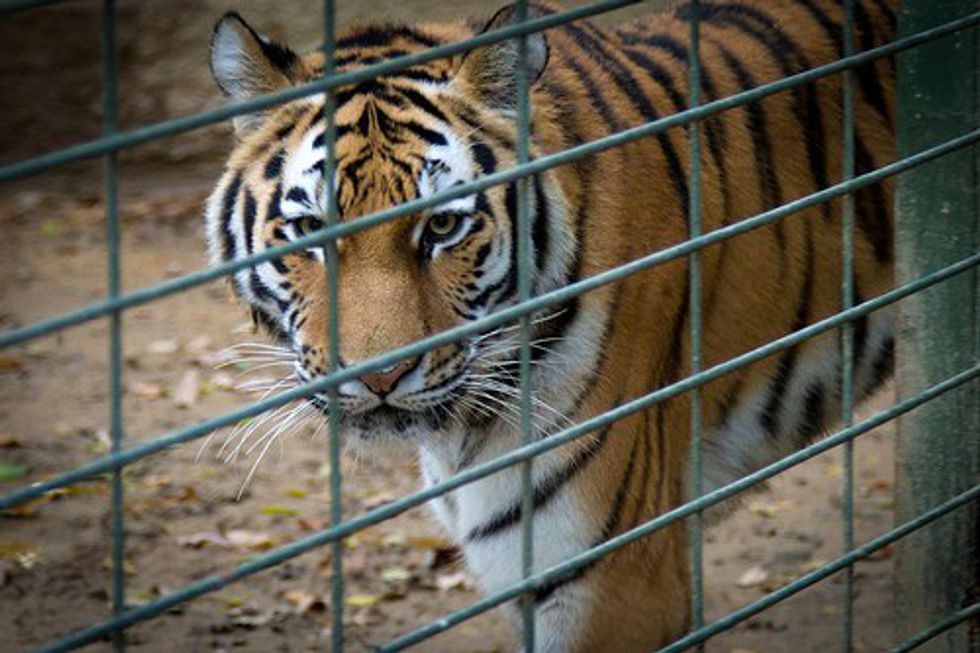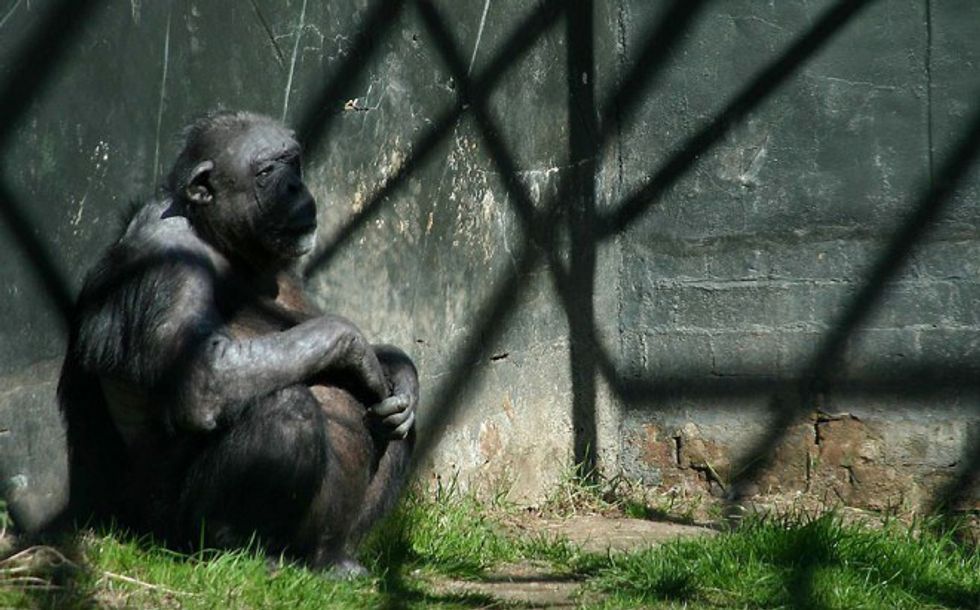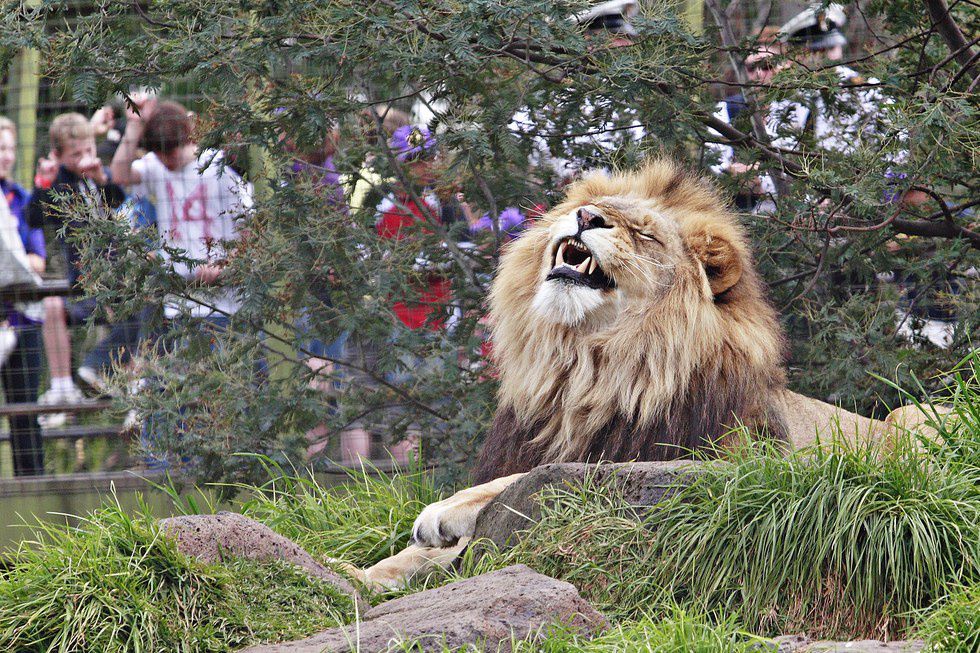Most of us have, at some point in our lives, visited a zoo. My first experience occurred around the age of 12 and left me questioning whether or not the creatures I had seen were comfortable in their small enclosures. It was then that I first began to wonder: Are zoos magical places or prisons masquerading as fun family attractions?
At first, I was excited to see so many animals, even if some of them laid in the corners of their enclosures looking rather disinterested. Then I began to feel a sense of guilt, and I wondered if it was something in the animals' expressions, or simply my young and curious mind demanding answers.
Throughout the years, I happened upon smaller establishments with anywhere from five to several dozen different creatures, and during these times, I worried for the animals who were kept in cramped, unkempt spaces with occasionally filthy food and water. I knew that this was not right. Sure, I had visited farms where animals were kept as pets, but the experience at the zoo stood apart. Was there really a need to have a Nile hippopotamus, African lion, Sumatran tiger, or a grizzly bear on display?
Zoos of good and bad caliber exist throughout the world, and it can be difficult to ascertain whether or not a zoo is more helpful than it is harmful. There are two sides to this argument, and the first notes that zoos can be useful in protecting critically endangered species who would otherwise not survive in their original habitats. As humans continue to ravage the earth for various economic pursuits, countless species are displaced, habitats are demolished, and many species are driven closer to extinction. Our once-accommodating planet has slowly become less and less habitable for a wide variety of animals, and it is no surprise that the rapid industrialization and population growth of humans has contributed to endless environmental issues. This impact is exacerbated daily as humans continue to poach, frack, consume, waste and ignore the depletion of numerous ecosystems.
As long as we continue on this path, many animal species will subsequently decline and cease to exist. In an attempt to protect certain species, many zoos implement breeding programs such as the Species Survival Plan (SSP) and the The European Endangered Species Programme (EEP). These initiatives attempt to maintain certain populations and ensure that they do not go extinct, though there are several difficulties these committees face. Species such as the mountain gorilla, Sumatran elephant, South China tiger and black rhino are critically endangered and are often seen in zoos. Seeing these animals in captivity and in environments that are created rather than natural can be disturbing, but life in their natural habitat is compromised due to human and environmental factors.
The destruction of our earth and many animals' habitats is not something that can be solved overnight, and for this reason, well-managed zoos can be beneficial in protecting species from endangerment and extinction. Additionally, it is important to educate people on these animals and what is occurring in their natural habitats, and a well-managed zoo can offer information to visitors and use funds to further positive change. A zoo that understands its proper role will educate parents and children about the threats facing the animals and spread awareness about the current state of each species. Visitors can gain an understanding of how animals are affected and how they can help in any way.
For those who still find zoos inherently cruel, it is also helpful to look at our progress as a whole from the first American zoo (The Philadelphia Zoo, 1874) to modern establishments. A decade after this zoo was established, other international zoos began to propose changes in zoo environments. These advancements would offer more natural landscapes for animals and a more thorough assessment of each animal's habitat, diet, social and general needs. As a whole, many zoos today recognize certain standards for animal care and participate in conservation efforts, but for every "good" zoo that exists today, there is certainly a "bad" zoo that raises outcries of disgust.
Let us take the story of Tilikum, an orca whose story is recounted in the chilling documentary Blackfish. The story evokes outrage mainly due to Tilikum's lack of proper treatment and a failure to correctly interpret his behavior. For 21 years at SeaWorld, Tilikum lived in a tank of water with 0.0001 percent of the quantity of water he would normally traverse in a day in the wild. How could this be acceptable? Orcas are intelligent beings and are absolutely affected by claustrophobic space, constant bombardment and isolation. Tilikum was depicted as violent and naturally aggressive after attacking employees, but in the wild this violence toward humans is essentially nonexistent. SeaWorld's actions reveal the ways in which animal captivity can lead to fatalities, terrible quality of life for animals, and lack of awareness for animal mistreatment.
Though humans may have more developed brains than animals, it is wrong to deny the psychological effects of captivity on animals. While a properly maintained zoo can protect an animal and offer it an imitation environment, no man-made enclosure can be equated to nature's landscape. As a result, many animals feel the psychological effects of being in closed spaces, often isolated and limited in their interactions. For animals who traverse great distances each day, a space fashioned by humans will not offer the same natural benefit. Depression and zoochosis, a disorder similar to obsessive-compulsive disorder in humans, are common in animals who are denied a natural habitat. Some humans may see animals as lesser beings, but their suffering is very much real. It is beyond ironic that humans have destroyed the habitats of many animals and subsequently placed these animals in inadequate spaces for the remainder of their lives in a desperate attempt to save them.
Furthermore, in regard to many of the programs that zoos have implemented regarding conservation efforts (such as the Species Survival Plan), it is common to see these funds being directed elsewhere. David Hancocks, a former zoo director of 30 years, told National Geographic that he believes approximately less than 3 percent of a zoo's budget goes towards conservation efforts. Instead, Hancocks claimed, the money goes toward "hi-tech exhibits and marketing efforts to lure visitors." Reports such as these raise questions about whether or not zoos are genuinely concerned with the welfare of their animals, and in fact these zoos are more preoccupied with lucrative exhibits and higher profits. Ironically, it is this mindset, this disregard for the welfare of living beings and the pursuit of wealth, that has (often inadvertently) driven humans to destroy the habitats and lives of animals.
Not all zoos are immoral, of course. There are absolutely zoos that are home to a variety of otherwise unprotected species and plenty of scientists who have the animals' survival prioritized. But how are we to know which are which? When I see advertisements and media announcing new animal exhibits or videos of friends at zoos, I often wonder: how does this zoo treat its animals? How many of the animals are there out of necessity for their survival and how many are living miserable lives? This subject is difficult because we cannot know precisely how animals are feeling, but with careful observation we can determine if an animal not otherwise endangered is mentally and physically thriving in confinement.
It is a matter of whether or not the zoo is participating in conservation efforts and educating the public about different species, creating a habitable and pleasant environment for every creature, and moving away from an avaricious mindset. Some zoos may succeed in all of the above, some may feign commitment and pursue money, and others may fall in between. As a zoo-goer, it is best to read up on a facility before visiting in order to determine where on the spectrum it falls. Conservation and protection are promising efforts, but it may also help to be skeptical and avoid supporting zoos that neglect and mistreat their animals.

























